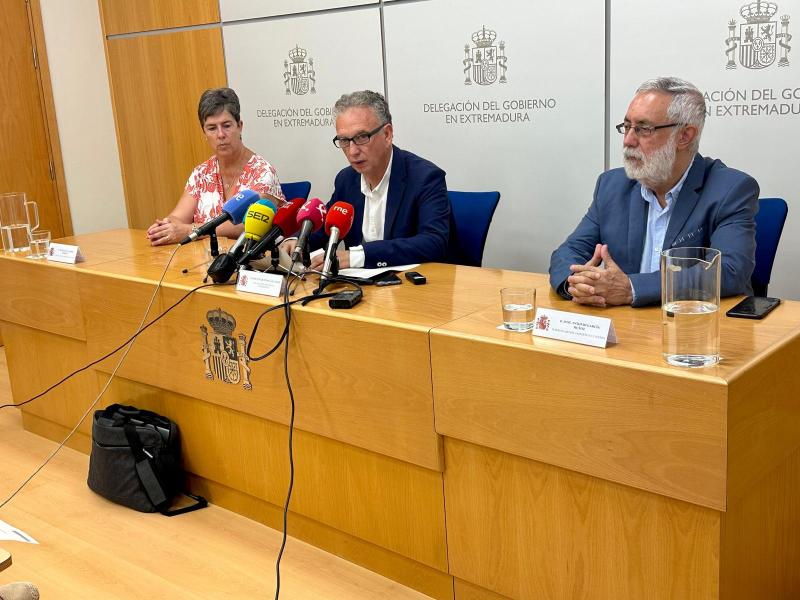The funds of the Recovery, Transformation and Resilience Plan reach more than 30,500 beneficiaries in Extremadura

The funds of the Recovery, Transformation and Resilience Plan reach more than 30,500 beneficiaries in Extremadura
The Recovery, Transformation and Resilience Plan has reached a total of 30,533 recipients in Extremadura. Among the beneficiaries are both individuals and companies that have received funds from programs that are aimed at aspects such as energy, reindustrialization, sustainability or digitalization.
In total, the Recovery Plan has involved an investment of 2,025 million euros in Extremadura. Of that amount, more than half, 1,118 million, have been executed by the General State Administration (AGE) through calls and tenders. The rest, 907 million euros, has been allocated to the autonomous government for the development of different programs, as agreed in the sectoral conferences.
Main projects
The infrastructure area receives the largest investment from the Recovery Plan in Extremadura, with more than 590 million euros, of which 555 are managed directly by the AGE. This item includes the 465 million mobilized by ADIF for actions related to the Madrid-Extremadura High Speed and the conventional network. Also noteworthy are the 75.2 million assigned to work on roads such as the N-521 in Cáceres, the accesses of the N-432 in Badajoz or the duplication of the N-630 in Mérida.
One of the most ambitious lines of the Recovery Plan is the PERTE VEC, for electric and connected vehicles. Included in this framework is the investment of 300 million euros for Envision’s lithium battery gigafactory in Navalmoral de la Mata. This project will generate 3,000 direct jobs and about 12,000 indirect jobs in the Campo Arañuelo region.
Renewable energy projects are another of the pillars of the Recovery Plan. Among the beneficiaries is the construction by Iberdrola of a reversible hydroelectric pumping plant in Alcántara, which has an investment of 44.9 million euros. Likewise, this same company develops two projects of modernization and adaptation of hydroelectric plants in Torrejón and Valdecañas, which have received a total of 58 million euros from the Government. In addition, the AGE mobilizes 99 million euros in Extremadura for energy storage, which includes 52.9 million to create the Iberian Center for Research in Energy Storage (CIIAE) of Cáceres.
In turn, the actions to improve the efficiency, digitalization and sustainability of the irrigation have received 48.2 million euros, among them 16.9 million for the Orellana Canal and 13.6 million for the Lobón Canal. For its part, the PERTE del Agua has 48.8 million in the region.
Among the priorities of the Plan is also the digitization of institutions, SMEs and individuals. The municipalities of Extremadura with less than 5,000 inhabitants have received 23.2 million euros to improve energy efficiency. These localities also benefit especially from the connectivity funds, which have invested 40.7 million for the deployment of broadband and 5G in the region. To all this is added the impulse of the digital kit, a measure that assumed an investment of 53.5 million and that has reached 13,432 SMEs and self-employed people in Extremadura.
The Recovery Plan has involved the investment in Extremadura of 145 million euros for social policies, among them, more than 51 million have been developed through the PERTE of Social Economy, making real measures that allow to improve equipment for care, accessibility programs or modernization of social services. In addition, more than 48 million euros have been allocated to the Junta de Extremadura for the development of housing policies.
Likewise, the investment of the Recovery Plan includes more than 100 million for the development of actions related to trade, tourism and culture. Of these, 77.9 million allow the regional executive to implement Destination Tourism Sustainability Plans.
Real improvements in Extremadura
The government delegate in Extremadura, José Luis Quintana, highlighted the Executive’s commitment to the region at the press conference to review the political course. “The data show that Extremadura is a priority for the government,” said Quintana, who stressed that investment is transforming the economic reality and productive fabric of Extremadura.
As a sample, Quintana has explained that currently the average pension in Extremadura is 1,274 euros per month, 380 euros more than in 2018, before the arrival of Pedro Sánchez to the Government of Spain. “A significant figure, if the increase proposed by the Government of Mariano Rajoy had been applied, the increase in these 5 years in the average pension in Extremadura would have been 17 euros. That is, 363 euros less than the increase applied with the government of Pedro Sánchez,” he said.
In the same way, the data of affiliation to the Social Security indicate that Extremadura has 422,500 employees, 26,973 more than in June 2018, when the change of government occurred. For its part, the change in the employment trend after the approval of the labour reform is evident. Indefinite contracts in the region have grown by 364% since 2019, the last year before the pandemic and before the Labor Reform. Similarly, EPA data for the second quarter of the year marks a record number of employed people in the region, with more than 430,900. These figures demonstrate, according to Quintana, “the government’s commitment to quality employment, job stability and the best rights and conditions for workers in Extremadura.”
Finally, the government delegate also wanted to highlight the real improvement in living conditions received by the 72,900 Extremadura people who have benefited from the SMI increases, which went from 735.9 euros in 2018 to 1,184 in 2025. The workers of Extremadura are the most benefited from this increase in Spain, since 21.70% of employees in the region receive the SMI, the highest percentage in the country.